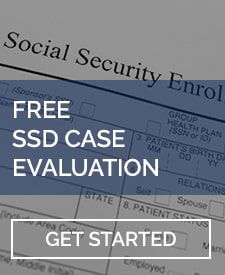There are hundreds of medical conditions which affect an individual’s ability to work. Some conditions are fairly obvious as having a significant impact upon working abilities such as loss of limb, severe heart disease, or certain cancers. Some not-so-obvious conditions might include plantar fasciitis, carpal tunnel…and even blepharospasm. If you haven’t heard of blepharospasm before you are not alone. This potentially disabling condition is fairly uncommon, affecting only 5 in every 100,000 Americans.
What is Blepharospasm?
Blepharospasm is a genetic condition wherein an individual suffers from involuntary blinking or spasm of the eyelids. This condition affects mainly people age 56 or older. For most, this condition begins gradually with an increase in blinking or eye irritation. As the condition worsens, the individual’s symptoms become more frequent with possible facial spasms developing. As with other rare conditions, treatment options tend to be limited. For this condition, the typical treatment options include Botox injections into the eyelids or possible surgical procedures to remove some of the muscles in the eyelids. Outside of these two options, treatment is fairly limited.
Is Belpharospasm Considered a Disabling Condition?

In terms of disability, this potentially disabling condition is one of many that may qualify you to receive federal disability benefits through the social security disability program. When applying for disability, you are alleging your medical condition poses a significant barrier to employment. This employment is not only the work you have done in the past but also any other work that may be available in the national economy. Once your claim for disability benefits is filed, the Social Security Administration will consider the level of impact your condition poses for working. To do this, SSA will review your medical records to determine your conditions, symptoms and treatment. They will also consider the recommendations from your treating provider. Meaning, in your medical records your treating provider may provide work restrictions such as no working around heights or dangerous machinery. Which would be fairly obvious restrictions considering your involuntary blinking. SSA will also consider the limitations you claim you suffer from. They do this by having you complete questionnaires about your functional abilities. Lastly, SSA may have your claim reviewed by a medical doctor to make a functional determination. All this means is that a doctor will review your records and form an opinion about what you are physically and mentally capable of in spite of your medical condition.
Once done, SSA will decide as to whether or not your blepharospasm is a disabling condition. If you are found to be disabled, SSA will provide you with a monthly monetary benefit in conjunction with some type of health insurance, depending upon your work history and the state you live in.
If you have been diagnosed with this rare condition, you should consider applying for these federal benefits. For the best possible chance of being approved, seeking counsel from an experienced disability attorney is recommended.





